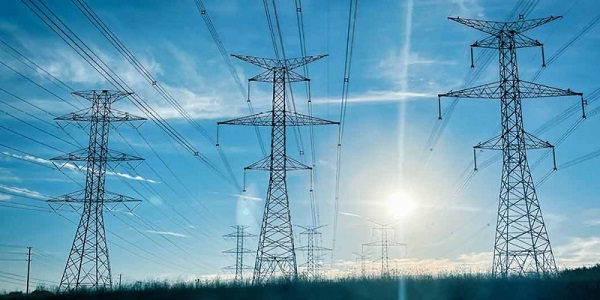Bruce Dowbiggin
MLB: Go Virtual Or Go Home
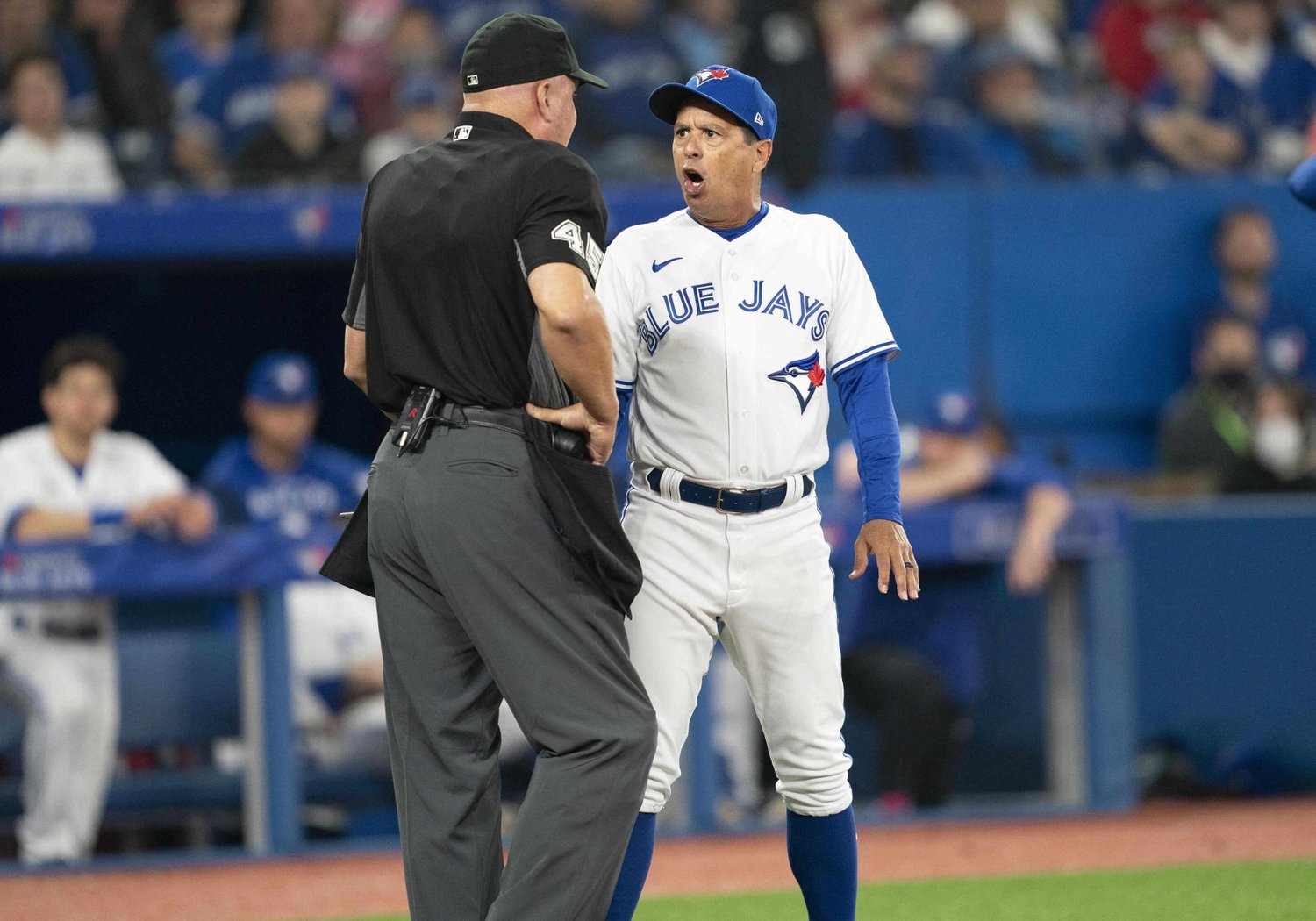
The MLB season is just two weeks old, and already baseball’s pig-headed decision not to use virtual technology to call balls/ strikes is looking like a massive blunder. While it jimmied with the DH rules and promised to use a pitch clock next season, MLB leaves the single greatest threat to the sport’s integrity unchanged.
A prime example was Saturday’s Oakland/ Toronto game where veteran umpire Jeff Nelson altered the outcome with his ball/ strike calls. According to Ump Scorecards, Nelson got just 86 percent of his calls correct. Eighteen of his 56 called strikes were actually balls. This produced +1.41 run advantage for Oakland, which won the game 7-5.
Worse, Nelson (who is rated 72nd of 74 MLB umpires) ejected Blue Jays manager Charlie Montoya for pointing out that Nelson was altering the game with his calls. His 86 percent accuracy was the worst on a day when other umps ranged from 90 to 97 percent accuracy. Run advantages ranged from Nelson’s abysmal 1.41 to 1.14 to 0.87 to 0.05.
In the past these numbers were unavailable, but with new technology and bettors looking for edges anyone can see MLB falling short. Especially when there is a clear alternative that will deliver equal results to bathe teams. As we wrote last October, the time has come to go virtual.
“There is power in sports. And then there is umpire power. As we have seen in the 2021 postseason, the ability of a single umpire behind home to shape an outcome is tremendous. That authority comes from the century before hi-tech allowed TV broadcasters to show a virtual strike zone on screen.
If the ump called it a strike, it was a strike. Despite volcanic eruptions from mangers liker Earl Weaver and generations of players blowing off steam there was no recourse. Eventually players were forced to put their bat on their shoulder and walk back to the dugout. Or to the clubhouse, if their tantrum got them tossed from the game.

Rarely was an umpire publicly fired. (Unless it was Dave Pallone who was apparently canned for being gay and upsetting Pete Rose in the days when Rose was an MLB big shot. Certainly none of them were held to any standard in terms of fitness.)
Now, however, the fan can see the virtual strike zone. And can see that an umpire like Laz Diaz, who was behind home plate for the Astros 9-2 win over the Red Sox in Game 4 of the 2021 ALCS, needs to be cashiered. This allows reporter/ author Jeff Passan to tweet:
@jeffpassan Home-plate umpire Laz Diaz has missed 21 ball-strike calls tonight, according to @ESPNStatsInfo. That is the most of any umpire this postseason. The green dot in the upper RH corner is the Eovaldi curveball that would’ve ended top of the ninth with the score 2-2.
The game was no exception for Diaz. As our friends at @umpscorecards show that Diaz missed almost ten percent of his ball/strike calls on average during the season (91.9%). One game he called only 87.6 percent of calls correctly.
Which is not to single out Diaz. For instance, Angel Hernandez missed 356 of the 4833 pitches he called this season for 92.6% accuracy. Brian O’Nora (91.8% accuracy), Jerry Meals (93%), Rob Drake (92.1%), CB Buckner (92.7%) Doug Eddings (92.6%), Larry Vanover (92.5%), Ron Kulpa (91.8%) and the legend Joe West (92.2%) are among the many who leave something to be desired. (We highly recommend following this detailed site if you are a fan or a bettor.)
While the average ball/ strike accuracy in the wider echelon of umpires hovers in the 92-95 percent range, even the best umpires have single games where their accuracy is in the mid-to-high 80s. Were those games that decided playoff spots? Division titles? Pitchers/ batters getting bonuses? Why did MLB not enforce a higher standard?
Look, 92-95 percent for the human eye in a stressful situation where 50,000 people are screaming at you is an impressive stat. And the umpiring today is scrutinized heavily by MLB for patterns that might produce betting scandals. There’s no doubt that the ball/ strike calling is vastly improved from the day when there were “pitchers’ umps” and “hitters’ umps”.
But the virtual stroke zone shows MLB can have 100 percent accuracy to a defined strike zone. Not to put @umpscorecards out of work, but with a virtual strike zone MLB has the power to remove doubt about the strike zone, end arguments and conspiracies about certain umps and make the games move faster.
One only need look at the Hawkeye system at work now in tennis for calling lines. The days of John McEnroe or Jimmy Connors going ballistic over a line call have magically ended as the computer unequivocally demonstrates that a ball is in or out. The sideshow of rage has now become a shrug of the shoulders as the affected player moves on to the next point, angry at themselves, not the chair umpire or line official.
So why doesn’t MLB use the tech they’ve got? Some suggest they’re leery of upsetting the influential umpires union who guard their privilege zealously, even in the face of some completely useless colleagues. Other still hold with the dinosaurs who say the virtual strike zone is inaccurate or can move unexpectedly.
This just in: Even if the virtual strike zone is off an inch or two it’s the same standard for both pitchers and all hitters. There’s also no need to put people out of work. The home-plate ump can still make calls on foul tips, swinging strikes, plays at the plate and the running of the game. Enough already.”
Bruce Dowbiggin @dowbboy is the editor of Not The Public Broadcaster (http://www.notthepublicbroadcaster.com). The best-selling author was nominated for the BBN Business Book award of 2020 for Personal Account with Tony Comper. A two-time winner of the Gemini Award as Canada’s top television sports broadcaster, he’s also a regular contributor to Sirius XM Canada Talks Ch. 167. His new book with his son Evan Inexact Science: The Six Most Compelling Draft Years In NHL History is now available on http://brucedowbigginbooks.ca/book-personalaccount.aspx
Bruce Dowbiggin
Hero Or Villain: How Chrystia Freeland Wears Both Masks
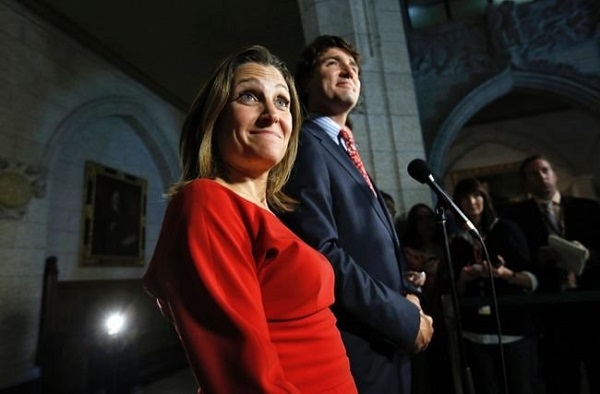
“How did you go bankrupt?” Bill asked. “Two ways,” Mike said. “Gradually and then suddenly.”
This Ernest Hemingway gem from The Sun Also Rises has gotten a workout in this time of progressive economic policy. But it’s worth repeating in the case of Justin Trudeau’s Canada where the F word is fiscal. The “gradually” part of Liberal fiscal policy has now passed. Leaving the “suddenly” of $60 B deficits with no plan for recovery
You’d think that missing your deficit estimate by $40B might have cost the finance minister Chrystia Freeland her job. But no! In Trudeaupia it was the failure of Freeland to embrace even more wack-a-doodle spending plans by the prime minister and his brain trust of former groomsmen and climate acolytes. Yes, the cratering of finances is the ideal time to award a GST holiday and $250 cheques to much of the nation. It has been noticed.
You know how Canadians are always bitter that America pays no attention to Canada? (Doug Ford appeared Tuesday on @CNN which identified him as Premier of “Ontaria”.) Well, the Collapse By The Canal in Ottawa has brought much attention to the nation. Specifically, president-elect Donald Trump, the Shecky Green of presidents, has noticed the chaos. ““The Great State of Canada is stunned as the Finance Minister resigns, or was fired, from her position by Governor Justin Trudeau,” Trump wrote, using his barb that Trudeau is not a PM but a lowly governor.
Adding for good measure, that Freeland’s “behavior was totally toxic, and not at all conducive to making deals which are good for the very unhappy citizens of Canada… She will not be missed!!!” Three exclamation points if you get that far.
Certainly no-one with a memory longer than two weeks will miss the deputy PM who gleefully wiped out the personal finances and freedoms of the Freedom Convoy truckers. Or the cabinet minister who promoted a standing O in the Commons for a former Nazi soldier. Or the senior government official who demanded legal restrictions against voters shouting at her in public.
Or the feminist who stood aside while her boss Trudeau expelled an indigenous female finance minister for allowing the RCMP to investigate PMJT’s nefarious activities on behalf of his donors. Or who… never mind. Just look up Blackface.

No, the current version of Freeland is the plucky woman who was fired on a Zoom call by a man. A woman of integrity who then sent off a stinging letter of resignation in which she revealed she was being pushed aside for a Trudeau buddy Mark Carney. A fiscal warrior who resisted going $60B in the red (she was cool at $40B, however). And, BTW, could she please deliver the government’s financial statement before she’s fired?
See how it works? She’s now a victim. “She didn’t just quit. She said ‘f**k you’ to Trudeau on the way out.” This is another case of somethingvblogger Melissa Chen calls Schrödinger’s Feminist, defined as a woman who is simultaneously a victim and empowered. Until something happens and she collapses into one of either states, whichever is politically expedient for her circumstance.
Chen expands on the notion. “A major component of the angst that characterizes much of the modern dynamics between men and women today comes down to the fact that women have demanded equal rights but also wish for preferred treatment.” A week’s viewing of The View will serve to illustrate this concept.

One of The View’s textbook cases of Schrödinger’s Feminist was Kamala Harris. The treatment of the defeated Democratic Party presidential candidate was guard-railed between her brave quest to become America’s first menstruating president and, on the other side, her victim status as a woman, the unfair way she was treated. It was enough to make Joy Behar’s head spin.
Forget that everyone in the mainstream media from pollsters to networks to Hollywood stars was all-in on Kamala as a “joyful “warrior. Even though they knew she was losing they cooked the polls the whole way for her. She was a victim, the kind Hillary Clinton meant when she said all women should be believed if they’re trying to destroy Justice Kavanaugh. Or, like serial fabulist E. Jean Carroll, waiting 30 years to bankrupt Trump and disqualify him from the presidential race, with a Law & Order script. How could a woman ever invent a story about getting trapped in a change room at Bergdorf Goodman with Trump?
Oh, Kamala played the brave front as she blundered to her record defeat. (Still called “a perfect campaign” by her apologists.) But underpinning it all was her status as a woman, a woman for whom her followers on The View demanded a double standard. In the end, only the Schrödinger feminists in the Dems coalition stayed loyal to Harris, (Kamala Harris Did A Good Job!) explaining away her failure to tell the world that Joe Biden was koo-koo for Coco Puffs as her innate decency.

And so Freeland, too, is being gifted with Schrödinger’s Feminism. Having Justin Trudeau, the Trust Fund twit, as your antagonist sure helps. So does the Woke media corps now in Ottawa painting sympathetic portraits of your sacrifice. Your dubious resumé since donning Liberal colours is forgotten. You will receive the get out of jail free card .
Hell, even the leader of the opposition will give you a tongue bath. “Instead of taking responsibility, the prime minister told her that she should take all the blame,” Pierre Poilievre said. “The good old boys in the back room would protect themselves and make the then-finance minister take all the blame.” Trudeau, who rejects bankers in favour of poets, will take the fall.
Which summons up this nugget from F. Scott Fitzgerald. “Life is a comedy for those who think and a tragedy for those who feel. Show me a hero and I will write you a tragedy.”
Bruce Dowbiggin @dowbboy is the editor of Not The Public Broadcaster A two-time winner of the Gemini Award as Canada’s top television sports broadcaster, his new book Deal With It: The Trades That Stunned The NHL And Changed hockey is now available on Amazon. Inexact Science: The Six Most Compelling Draft Years In NHL History, his previous book with his son Evan, was voted the seventh-best professional hockey book of all time by bookauthority.org . His 2004 book Money Players was voted sixth best on the same list, and is available via brucedowbigginbooks.ca.
Bruce Dowbiggin
MLB’s Exploding Chequebook: Parity Is Now For Suckers
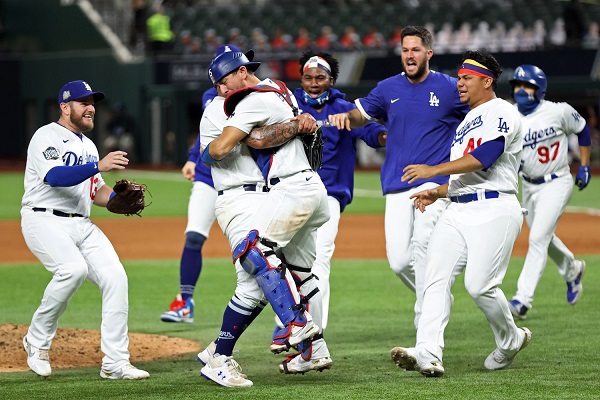
MLB has seen parity and proclaimed, “We don’t give a damn!” Okay, they didn’t say that. In fact they insist the opposite is true. They’re all about competition and smaller markets getting a shot at a title. But as the 2024 offseason spending shows, believe none of what you hear and half of what you see in MLB.
Here’s the skinny: Juan Soto‘s contract with the NY Mets — 15 years and guaranteeing $765 million, not a penny of which is deferred. Max Fried signed an eight-year, $218 million deal with the New York Yankees. Later, Nathan Eovaldi secured a three-year, $75 million contract to return to the Texas Rangers. Blake Snell (five years, $182 million with the Los Angeles Dodgers) and Matthew Boyd (two years, $29 million with the Chicago Cubs) added to the splurge.
There’s one more thing that stands out. MLB has no trouble with the financial big boys in New York, Los Angles, Texas, Toronto, Atlanta and Chicago shelling out money no small market dare pay. In the MLB cheap seats, Tampa, Pittsburgh and Miami can’t send out quality players fast enough. But MLB is cool with that, too, as those paupers get a healthy slice of TV money.
So yes, they’re all about talking parity with their luxury tax system. But to keep the TV, digital, betting and marketing lucre flowing they have to have large media markets swinging the heaviest bats come postseason. The question is, do MLB fans care the way they used to about parity? It says here they don’t. More want to seed best-on-best more often. Which is brutal but refreshing.

Their sister leagues, married to draconian salary cap systems, are still pushing parity, even as they expand beyond recognition. In our 2004 book Money Players, legendary Boston Bruins coach/ GM Harry Sinden noted, “The problem with teams in the league, is that there were (then) 20 teams who all think they are going to win the Stanley Cup and they all are going to share it. But only one team is going to win it. The rest are chasing a rainbow.”
And that was before the expansion Vegas Golden Knights won a Cup within five years while the third-year Seattle Kraken made a run in those same 2023 playoffs. There are currently 32 teams in the league, each chasing Sinden’s rainbow of a Stanley Cup. That means 31 cranky fan bases every year. And 31 management teams trying to avoid getting fired.
Maybe we’ve reached peak franchise level? Uh, no. Not so long as salary-capped leagues can use the dream of parity to sell more franchises. As we wrote in October of 2023, “If you believe the innuendo coming from commissioner Gary Bettman there is a steady appetite for getting a piece of the NHL operation. “The best answer I can give you is that we have continuous expressions of interest from places like Houston, Atlanta, Quebec City, Salt Lake City, but expansion isn’t on the agenda.” In the next breath Bettman was predicting that any new teams will cost “A lot, a lot.”
Deputy commissioner Bill Daly echoed Bettman’s caution about a sudden expansion but added, ”Having said that, particularly with the success of the Vegas and Seattle expansions, there are more people who want to own professional hockey teams.” Translation: If the NHL can get a billion for a new team, the heck with competitive excellence, the clock might start ticking sooner. After all, small-market Ottawa just went for $950.”
It’s not just the expansion-obsessed NHL talking more teams. MLB is looking to add franchises. Abandoned Montreal is once more getting palpitations over rumours that the league wants to return to the city that lost its Expos in 2005. Recent reports indicate that while MLB might prefer Salt Lake City and Nashville it also feels it must right the wrong left when the Expos moved to Washington DC 19 years ago.

The city needs a new ballpark to replace disastrous Olympic Stadium. They’ll also need more than Tom Brady to fund the franchise fee and operating costs. And Quebec corporate support— always transitory in the Expos years— will need to be strong. But two more MLB franchises within five years is a lock.
While the NBA is mum on going past 30 teams it has not shut the door on expansion after seeing the NHL cashing in. Neither has the cash-generating monster known as the NFL where teams currently sell for over six billion US. The NFL is eyeing Europe for its next moves.
The question that has to be asked in this is, WTF, quality of competition? The more teams in a league the lower the chances of even getting to a semifinal series let alone a championship. Fans in cities starved for a championship— the NFL’s Detroit Lions or Cleveland Browns are entering their seventh decade without a title or the Toronto Maple Leafs title-less since 1967— know how corrosive it can be.
Getting to 34, 36, maybe 40 teams makes for a short-term score for owners, but it could leave leagues with an entire strata of loser teams that no one—least of all networks, carriers and advertisers—wants to see. Generations of fans will be like Canuck supporters, going their entire lives without a championship.

In addition, as we’ve argued in our 2018 book Cap In Hand: How Salary Caps Are Killing Pro Sports and How The Free Market Can Save Them, watering down the product with a lot of teams no one wants to watch nationally or globally seems counter productive. The move away from quality toward quantity serves only the gambling industry. But since when has Gary Bettman Truly cared about quality of the product? So long as he gets to say, “We have a trade to announce” at the Draft, he’s a happy guy.
When we published Cap In Hand we proposed a system like soccer with ranked divisions using promotion and relegation to ensure competition, not parity. Most of the interviewers we spoke to were skeptical of the idea. But as MLB steams closer to economic Darwinism our proposal is looking more credible every day. Play at the level you can afford. Or just watch Ted Lasso. Your choice.
Bruce Dowbiggin @dowbboy is the editor of Not The Public Broadcaster A two-time winner of the Gemini Award as Canada’s top television sports broadcaster, he’s a regular contributor to Sirius XM Canada Talks Ch. 167. His new book Deal With It: The Trades That Stunned The NHL And Changed hockey is now available on Amazon. Inexact Science: The Six Most Compelling Draft Years In NHL History, his previous book with his son Evan, was voted the seventh-best professional hockey book of all time by bookauthority.org . His 2004 book Money Players was voted sixth best on the same list, and is available via brucedowbigginbooks.ca.
-

 Brownstone Institute2 days ago
Brownstone Institute2 days agoA Potpourri of the World’s Unexposed Scandals
-

 COVID-192 days ago
COVID-192 days agoEsteemed UK Doctor pleads with governments to cancel COVID-19 vaccines
-

 National1 day ago
National1 day agoPaul Wells: The Second Finance Ministers Club
-

 Business1 day ago
Business1 day agoOut-Trumping Trump: A Mission Without a Win
-

 conflict1 day ago
conflict1 day agoSending arms to Ukraine is unnecessarily placing American lives in danger
-
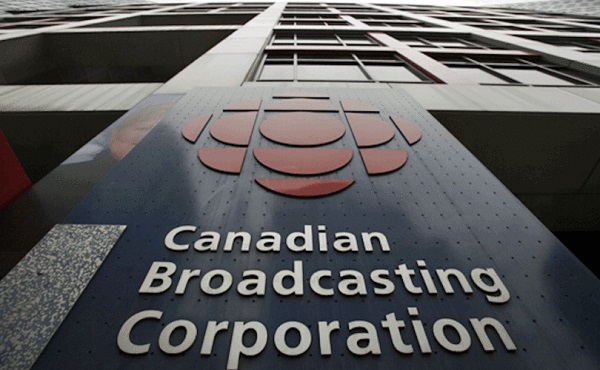
 Business1 day ago
Business1 day agoThe CBC gets $1.4 billion per year, but the Trudeau government wants to give it more
-

 Bruce Dowbiggin2 days ago
Bruce Dowbiggin2 days agoMLB’s Exploding Chequebook: Parity Is Now For Suckers
-

 Business2 days ago
Business2 days agoEXCLUSIVE: Former Biden Climate Czar Apparently Pushed Homeland Security To Ease Up On Chinese Company Linked To Slave Labor



